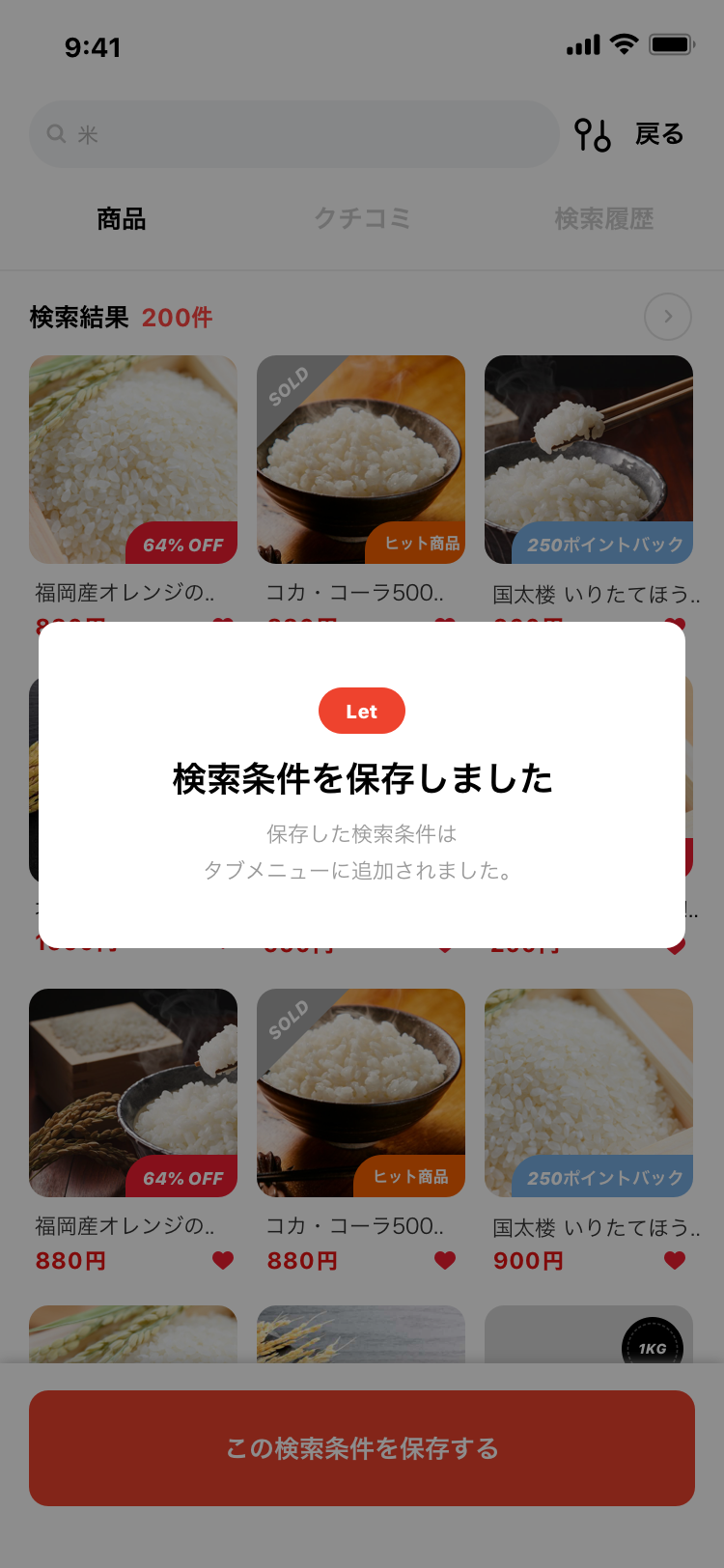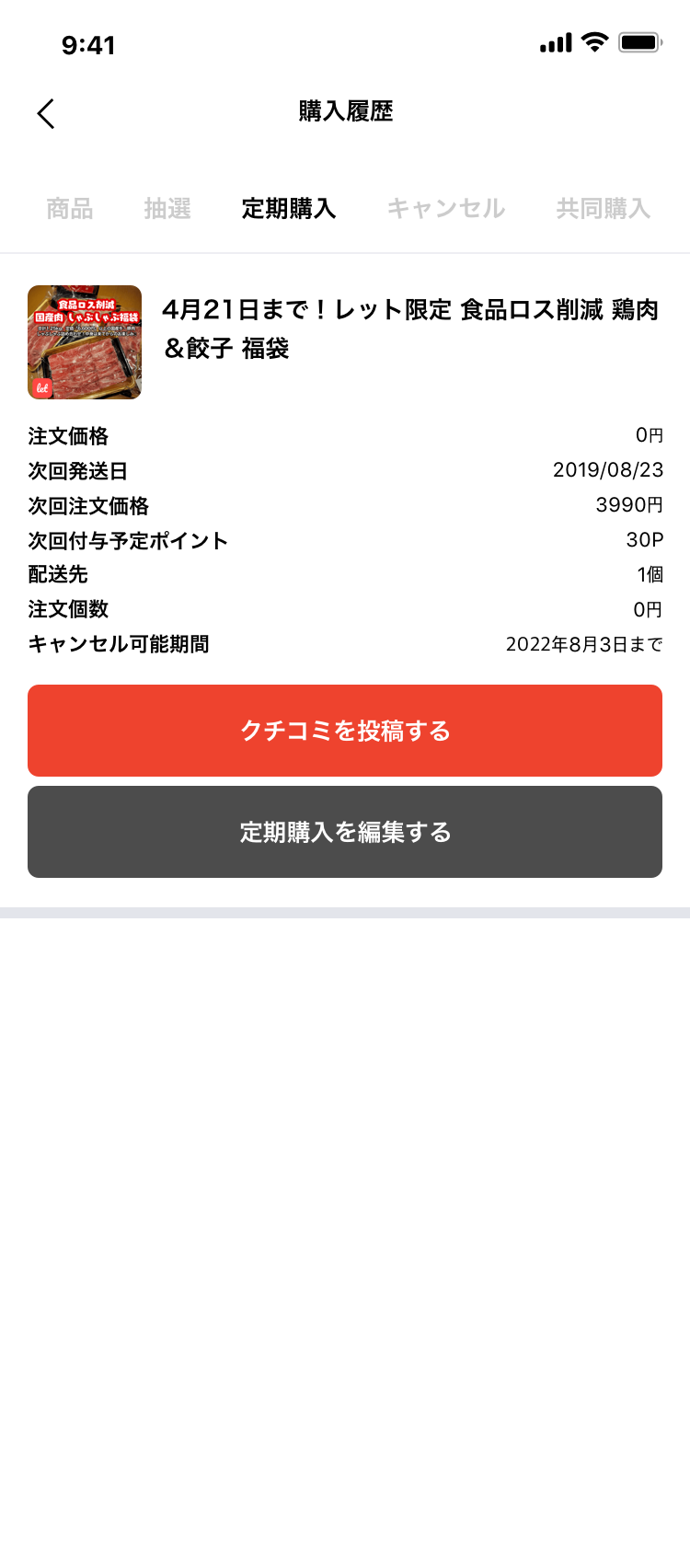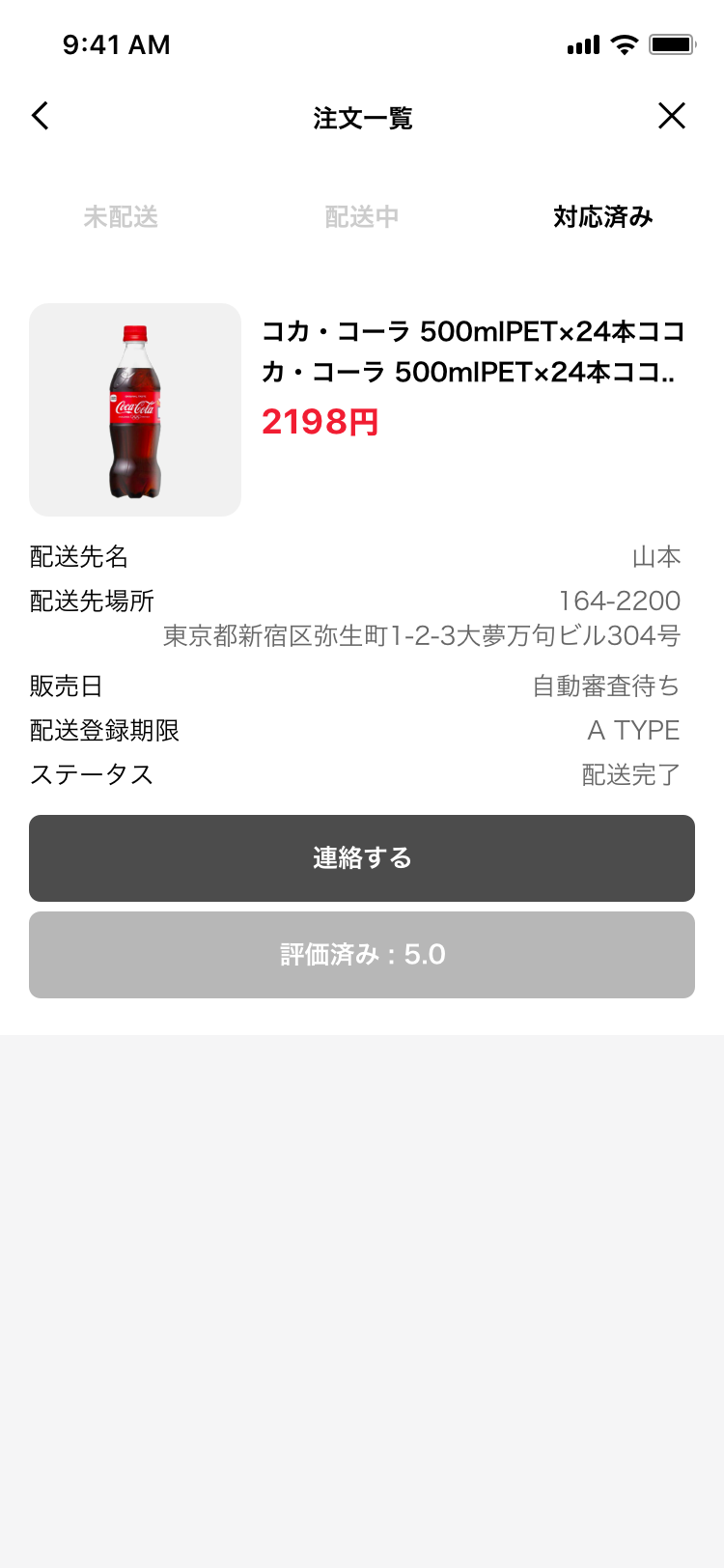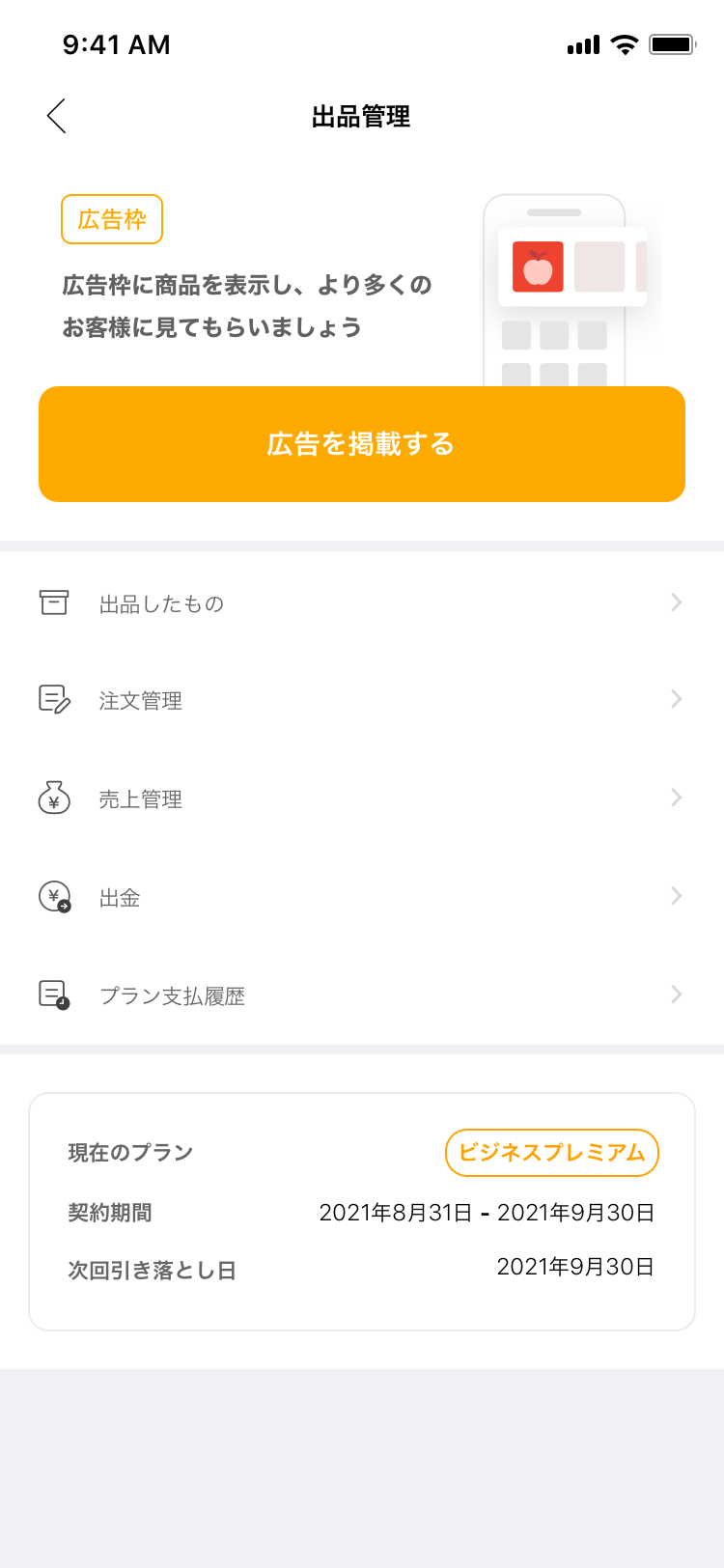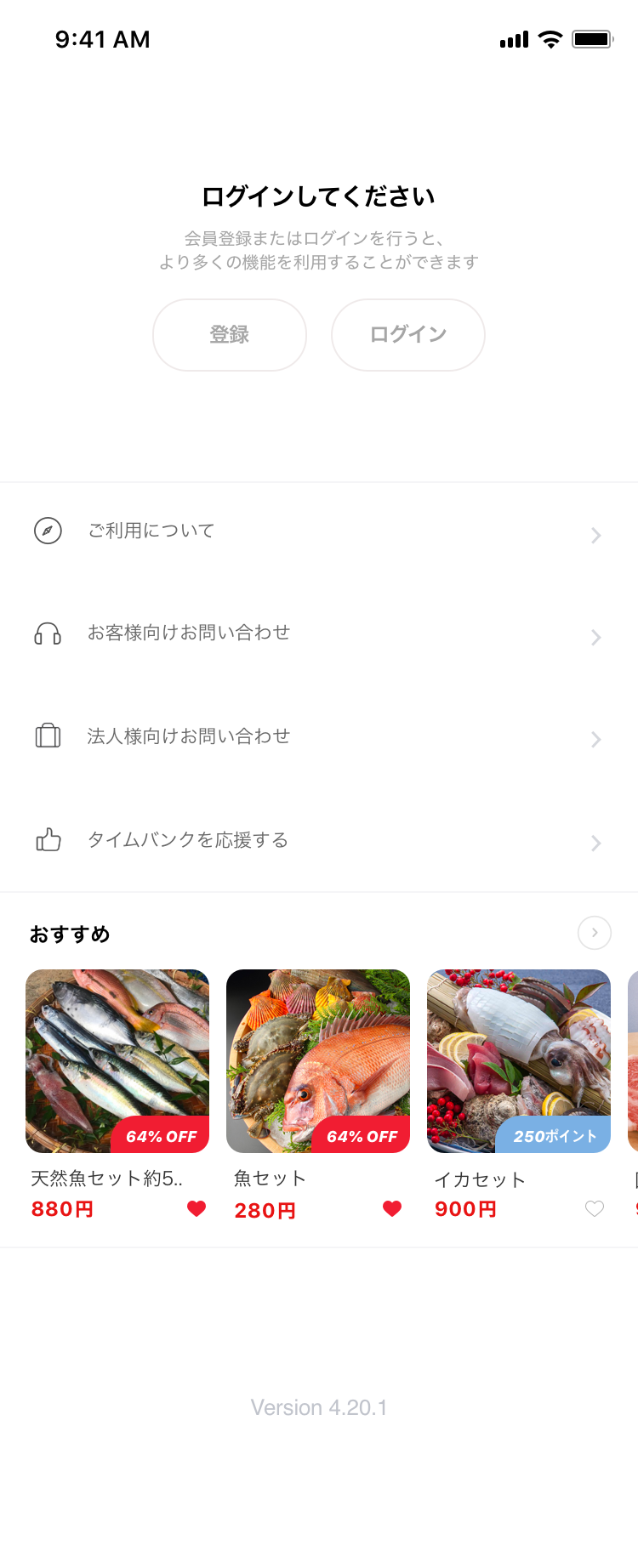
1. About
Service Definition: Let is an e-commerce service designed to solve Japan's social issue of 6 million tons of annual food loss and to bridge the gap between consumers and sellers.
Participation Period: January 2019 ~
Tasks: Since 2019, I have been fully involved as a designer in building, launching, and operating the Let app. I directed all design work related to the service, including the app, website, and advertisements, while managing 1 to 3 designers and simultaneously handling practical tasks.
Design Process:
Requirement Analysis & Feature Definition: Analyze requested features and pages from the CEO/executive team -> Technical verification by the development team -> Define requirements -> Conduct reference research.
Design Composition & Drafting: Structure the pages -> Draft designs that incorporate additional and revised feature requests.
Design Review & Finalization: Present the completed design to the CEO -> Design confirmation -> Move to implementation stage.
2. UX Project
Case 1. Introduction of a Premium Membership (Subscription Service)
The introduction of a paid membership model to improve service KPIs, attracting paid members by actively utilizing the point-back system.
1) Problem Definition / Hypothesis Setting
1) Problem Definition / Hypothesis Setting
1-1. Problem Definition
There are limitations in sustaining the service solely on the revenue generated from free members purchasing products. Introducing a paid membership model is urgently needed to build a stable revenue model. Retention of free members, who were initially attracted through the point-back system, is decreasing.
1-2. Problem Basis
Let’s active users and revenue are increasing, but the company is struggling to avoid deficits due to advertising and marketing expenses, hampering long-term business growth. Additionally, a few users are abusing the point-back system, slightly hindering revenue growth. Most free members are enjoying the point-back benefits but tend not to use the service long-term, indicating that the current point-back system does not sufficiently increase retention.
1-3. Hypothesis Setting
If we introduce a paid membership model, XX% of existing free users will convert to paid members, increasing revenue.
Introducing a point-back system for paid members will raise the repurchase rate.
Offering a sustainable point-back benefit exclusively to paid members, rather than one-time benefits like 50% point return upon sign-up, will increase retention.
1-4. Hypothesis Basis
Amazon Prime is a global example of a successful paid membership model.
Various research shows that point-back systems based on loyalty programs effectively increase user revisit and repurchase rates.
How special rewards in loyalty programs enrich consumer–brand relationships
How paid loyalty programs can help bring consumers back to your brand
2) Benchmarking / Data Research
3) uX Ideation
Wireframe
4) Advanced Strategy (Refer to the image above)
A special color (yellow) was designated exclusively for premium members, offering a different experience from free members.
In the past, Let changed its main color from blue to red based on its higher influx of warm-toned content (yellow, red, orange) compared to cool tones and achromatic content. Based on this logic, yellow was chosen as the color for premium members.
Premium membership benefits were consistently exposed in the first view of the purchasing UX.
Point-back information was prominently displayed with illustrations on certain products.
5) Results
The premium membership model launched at the end of August 2021 -> From September 1st to 5th, 4723 monthly subscribers joined.
Although additional data analysis is required for accurate evaluation, such as considering the existing subscription trend and other influencing factors, the rapid growth from 0 to 4723 paid members in just five days suggests that the UI contributed to the outcome.
Case 2. Reducing Premium Membership (Subscription Service) Cancellation Rate
Improving the UX for retrying failed payments due to payment errors, and preventing users from repeatedly canceling and rejoining the premium service to exploit the point-back system.
1) Problem Definition / Hpothesis Settin
1) Problem Definition / Hypothesis Setting
1-1. Problem Definition
Since introducing the premium membership system in 2021, new memberships have been increasing, but the renewal rate remains low.
The number of users who do not renew their premium membership correlates with those who fail to retry their payment.
Some users are intentionally canceling and rejoining to exploit the point-back system.
1-2. Problem Basis
Premium memberships are canceled immediately after the monthly payment due date, leading to a low renewal rate.
There is no notification about the need to renew the premium membership.
The user journey to the renewal page is insufficient when premium renewal is required.
Behavior patterns of users canceling and rejoining three or more times have been observed.
1-3. Hypothesis Setting
Attempting to retry payments 7, 14, 21 days, and one month after payment failure will reduce the premium membership cancellation rate.
Placing a UI that encourages retrying payment in a prominent position will increase the renewal rate.
Notifying users about renewal in a non-intrusive way will reduce user discomfort.
Blocking the rejoining of users who intentionally cancel their premium service will reduce abuse cases.
2) Benchmarking / Data Research
1-4. Hypothesis Basis
2) Benchmarking / Data Research
3) uX Ideation
Wireframe
Improvement Points:
Retry attempts: Four automatic retry attempts after payment failure (7, 14, 21 days, and one month later).
UI Enhancement: Placing the UI for retrying payment in a prominent location.
Subtle notification: Notify users about renewal in a non-intrusive manner.
4) Advanced Strategy (Refer to the image above)
UI elements encouraging retry attempts were placed in prominent areas.
No excessive push notifications or pop-ups; only alert UIs were shown during the payment process.
Renewal-related UIs were displayed permanently in the payment information cell on My Page.
A popup encouraging retrying payment appeared on the home screen only after the first payment failure.
Automatic retry attempts were made 7, 14, 21 days, and one month after payment failure.
Users who voluntarily canceled the premium service were permanently blocked from rejoining.
5) Results
5-1. Specific Figures Before and After Improvement
Premium membership cancellation rate decreased by 30.43% from January to February.
Before Improvement (January):
Premium membership cancellation rate: 20%
Renewal rate: 40%
Success rate of retry payments after failure: 15%
After Improvement (February):
Premium membership cancellation rate: 14%
Renewal rate: 56%
Success rate of retry payments after failure: 25%
5-2. Data Analysis
As of July 2023:
Monthly plan active users: 5,587
Voluntary cancellations after June: 63 users (~1.13%)
Annual plan active users: 4,098
Voluntary cancellations after June: 20 users (~0.49%)
5-3. Summary
The 30.43% reduction in cancellation rate from January to February can be attributed to the retry attempts and UI improvements.
The decrease in cancellation rate in the monthly plan is likely due to providing an environment where users could easily retry payments after failure.
3. App screen
Visual Output of app























